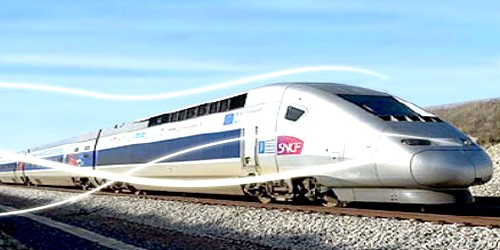How to compare transport prices
Introduction
The cost of transportation usually includes both direct and indirect costs. To compare different transportation modes purely from a monetary point of view, one must calculate the total journey cost.
N.B: Non-monetary aspects, such as environmental friendliness (train, bus, boat), risks of meeting with an accident (train, plane, boat), comfort (train, boat), speed (train, plane), or even practical aspects (car) may also be taken into consideration.Travel by car
Apart from the societal costs associated with having a car (hospital fees linked to the death rate on the roads, destruction of ecosystems, public health expenditures associated with pulmonary diseases, etc.) the costs of a car are the following:
Direct costs
Gas costs, toll fees, parking fees, fines, etc. make up the direct costs that are associated with car journeys.
Indirect costs:
The amortization of vehicle price, insurance fees, the price of a driver's license, etc. are all costs that are associated with the car as a means of transportation.
N.B: You might say that no matter how little or how much you drive, the insurance fee is a fixed amount and getting a driver's license is a one-off affair. However, you don't even need a license to take the train, plane or boat. The same goes for insurance. What's more, you could somehow end up having your driver's license revoked one day, and be forced to take the test again. All these costs must therefore be taken into account when calculating the cost of a journey.

Public transport
Public transport is not "door-to-door", which means that unlike using the car, you may have to combine several different transportation modes in order to get from point A to B. There are two possible cases: occasional travel and travel with subscription (frequent traveler).
Occasional travel
Direct costs:
The direct costs include the ticket price, e.g. bus, plane or boat ticket.

Although travel by plane is one of the transportation modes that pollutes the most, a person traveling alone pollutes less by plane than if he/she were to go by car.
Indirect costs:
The additional transport costs involve the indirect costs of travel by plane or train, e.g. the cost of taking a taxi to the train station. Similarly, don't forget about various taxes (recovering the cost of a passport, airport taxes, etc.).
Frequent traveler subscription
Direct costs:
These would involve the price of the ticket for travel, just as in the case of occasional travel.
Indirect costs:
These may include:
-Recovering the cost of the subscription fee divided by the number of journeys.
-Costs from additional transportation modes (e.g. cost of taking a taxi to the train station)
-Potential tax fees such as airport taxes, etc.
$28+(70/10) = $35.

Summary-Case study
Let us consider the case of a 20-year-old living in the Paris suburbs with an under 25 subscription ($70) that he uses for 10 trips to and from Lyon (300 miles) via high speed train (calles TGV).
He takes the taxi ($14), the Metro ($2), then walks from the Metro station to the platform ($0) and boards the high speed train ($50 with the discounted price for 12-25 years old people). Finally, a friend comes to pick him up by car at the train station at Lyon.
The cost of his journey would be:
Cost = $14 (taxi)+$2 (Metro) + $50 (high speed train) + $7 (cost of under 25 subscription recovered over 10 journeys) = $73
Whereas if he takes the car, even one that consumes just 4 liters per 100 km (meaning a consumption of 16 liters over the journey or $33.60 if 1 liter = $2.10), it would surely cost him twice or even thrice as much if the indirect costs are taken into consideration.
From an economic point of view, even if a train ticket costs $50 and gas $33.60, it would be better to choose the train option when traveling alone.
Conclusion
Those transportation modes that are seemingly the most expensive may not actually be so in reality. The car is generally the most expensive means of transport in per kilometer terms, followed by the plane, then the train. Travel by bus or boat offers the most competitive terms.
Use the savings made on travel to offset your co2 emissions so as to reduce your impact on the planet and work toward becoming "carbon neutral".
Here are some ballpark figures of the cost per kilometer of various different transportation modes:
-Taxi: $1.40 to $4.20 per kilometer
-Car rental: $0.70 to $1.40/km
-Car: $0.35 to $1.12/km (on average: $0.49 to $0.56/km)
-Bus in urban areas: $0.14 to $0.70/km
-Bicycle: $0.07 to $0.14/km
-Coach: $0.07 to $0.21/km (example: 1000 km round trip in a bus such as Eurolines buses which costs $120)
-Train: $0.03 to $0.42/km
-Plane: $0.03 (low cost with advance booking) to $1.40/km (business class).

Be-ecolo recommends the following website Traduction Ink
You like this website? You can contact us and put this page as your home page